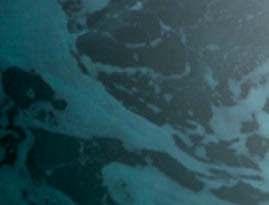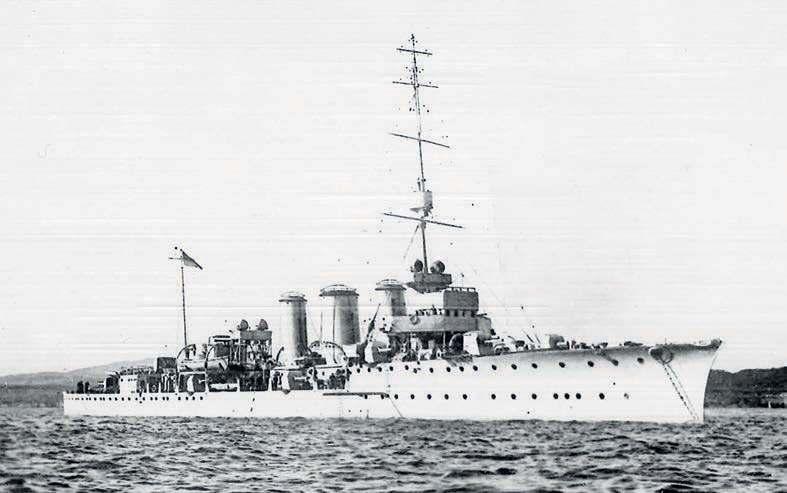
22 minute read
HMS CAROLINE
from shipse 5ty3s5
by coolkdei2
JUTLAND SURVIVOR ENJOYS NEW LEASE OF LIFE
HMS Caroline is an iconic ship, a World War I survivor, and well known in Belfast, her home for 95 years. She is the last survivor of the Battle of Jutland and has recently undergone a restoration so that she is fit to welcome visitors.
Advertisement
The light cruiser HMS Caroline, built by Cammell Laird & Co in Birkenhead in 1914, is one of the most significant preserved warships in the British Isles. She is one of only three surviving Royal Navy warships from World War I, together with the 1915-built HMS M33 and the Flower class sloop HMS President (ex-HMS Saxifrage), which was moored on the Thames for many years but is now at Chatham. Caroline’s opening to the public in 2016 for the first time in her history was the culmination of much effort and hard work on the part of various organisations to ensure her future was secure, and she has become a major exhibit within the city’s famous Titanic Quarter. Caroline was launched on 21 September 1914 by
HMS Caroline in service, pictured prior to her 1917 refit at Fairfield’s Yard, Govan, when the four-inch guns were removed and replaced by a single six-inch gun on the centre line just forward of the bridge. Lady Lawrence Power, wife of Admiral Sir Lawrence Power KCB CVO. She was commissioned into service on 4 December 1914, becoming one of the most speedily built major warships ever. Caroline was one of a class of six light cruisers ordered in 1913, her sisterships being HMS Carysfort, HMS Cleopatra, HMS Comus, HMS Conquest and HMS Cordelia. The Caroline class was designed for
Caroline in Belfast in May 1925, having just been converted to a floating base and drill ship for the Royal Naval Volunteer Reserve.
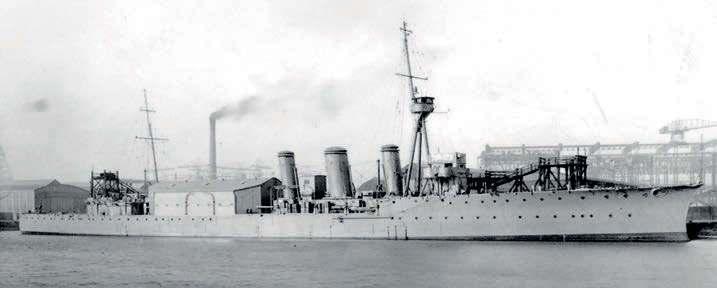
North Sea operations, acting as scouts and escorts for the Grand Fleet, with the ability to fight destroyers and serve as leaders of destroyer flotillas. By modern standards they were quite small, equivalent to a frigate, and were wet ships. Caroline’s naval career began when she joined the 4th Destroyer Flotilla as leader in December 1914, and served in the 1st Light Cruiser Squadron from February 1915 to November 1915. In early 1916 she joined the 4th Light Cruiser Squadron, remaining with that squadron until 1922. She served in the North Sea throughout World War I, joining the Grand Fleet at Scapa Flow. After fighting in the Battle of Jutland, she was recommissioned for service in what was then the East Indies, but in February 1922 paid off into dockyard control and was placed in reserve. She arrived in Belfast in 1924 to become the static floating headquarters of the Royal Navy Volunteer Reserve, and has been there ever since. On her arrival in Belfast, the ship was handed over to Harland & Wolff Shipyard for conversion into a Depot and Training Ship. Her boilers were removed and the space was used for workshops and classrooms, and a large superstructure was built aft of the funnels to provide a drill space. On completion of this work, Caroline was moored in Musgrave Channel in Belfast Harbour and thus entered the next phase of her career.
She was something of an unknown gem in Northern Ireland’s capital, hidden away behind barbed wire for many years, but retaining many of her original features, including her original machinery and many of her original fittings. However, when she was decommissioned in 2011, she faced something of an uncertain future. In June 2012 plans to move her to Portsmouth


Although no longer capable of making way under her own power, Caroline remains afloat and in excellent condition, and is well worth visiting in Belfast.
were announced, subject to the availability of funding, but in October 2012 the Northern Ireland government announced that the ship would remain in Belfast and that the National Heritage Memorial Fund had pledged £1 million to help restore her Work continued to ensure she had a future and, with the help of a grant of an £11.5 million from the Heritage Lottery Fund, as well as assistance from the Department of the Economy and the Heritage Memorial Fund, the ship was restored
and stayed in Belfast, being opened to all for the first time in June 2016.
In October 2016 Caroline underwent inspection at Harland and Wolff and repairs were made to her hull so that she could be officially opened to the public on 1 July 2017 at Alexandra Dock. The National Museum of the Royal Navy (NMRN) and the Department of Enterprise, Trade and Investment worked together to restore and present the ship, which is described as being ‘a lone survivor and living legend’.
BATTLE OF JUTLAND INVOLVEMENT
The most famous wartime action in which HMS Caroline was involved came in May 1916, when, together with the Grand Fleet, she faced the German High Sea Fleet at Jutland, off the Danish coast. The British forces consisted of 151 vessels and 60,000 sailors, while on the German side 99 warships and about 45,000 sailors were involved. The German High Seas Fleet had rarely put to sea since the outbreak of war in 1914, frustrating the Royal Navy’s desire to fight a conclusive action, for which their Dreadnoughts had been built. But, after nearly two years of stalemate, the opportunity came in May 1916. On 31 May the Royal Navy’s Grand Fleet and Battlecruiser Fleet steamed south towards the Skagerrak, north of the Jutland peninsula. During the battle, Caroline was engaged for eight minutes by a German battleship of the Deutschland class, and was fortunate not to sustain severe damage. She also pressed home a torpedo attack to 5,200 yards, though without success.
She took up her station ahead of the fleet at 0513. The Germans were sighted at 1440, and Caroline was cleared for action, increasing speed to 19 knots in readiness. By 1530 Admiral Beatty and his battlecruisers were in touch with the enemy, who opened fire shortly afterwards. Caroline became actively involved about 1740, when smoke was sighted on the starboard bow. Two other light cruiser squadrons, followed by battlecruisers, came across the bows of Caroline’s squadron, which turned and followed them.
Caroline entering Portsmouth Harbour to pay off on her return from the East Indies, January 1922. Caroline as she is today, preserved in Alexandra Dock.
HMS CAROLINE
BUILT 1914, Cammell Laird, Birkenhead DIMENSIONS 446ft (135.94m) x 41.5ft (12.65m) x 14.5.ft (4.42m) DISPLACEMENT 3,750 tonnes (design displacement) PROPULSION Four Parsons direct drive turbines, two Parsons cruising turbines, eight oilfuelled Yarrow boilers, speed 30 knots ARMAMENT 2 (later 4) x 6-inch guns; 8 (later 4) x 4-inch guns; 1 x 13-pdr anti-aircraft gun; 1 x 6 pounder anti aircraft guns, 2 x 21-inch twin torpedo tubes COMPLEMENT 289


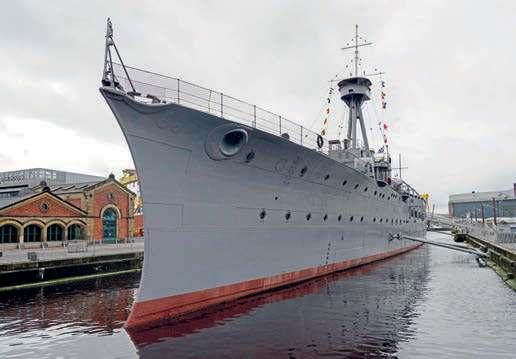

THE FLEET BOOK

marc-antoine bombail
michael gallagher
Ships Corner
To advertise please contact Hill View
Media on 01366 728 488
WILLIAM DOXFORD &SONS OFSUNDERLAND The full story of this outstanding family business of shipbuilders and marine engineers is now available . 300 pages, 26cm x 20cm, 220 pix. £18 + £3 pp From Amazon or Patricia Richardson St. Vincents, Addington, Kent ME19 5BW @ £18 + £3 pp. richardsonbooks@btinternet.com or 07876 102 572 for BACS details.
Please do read my book, ‘The Black Ship’s Odyssey, Book Three. Published at last.’
Published by Amazon on their Kindle website, Kindle code B00XNRB6W8.
NAVAL/MARITIME BOOKS BOUGHT AND SOLD.
Send for our Free Monthly Catalogues. GERALD LEE MARITIME BOOKS. PO Box 259, Bexhill-on-Sea, East Sussex TN40 9FH
PHOTOTRANSPORT
49 Years of Ships Monthly
41 in current blue binders, rest loose. Good Condition £200
Buyer collects North Devon
MODELS or call about delivery 07774 887 951 chapplerj@btinternet.com
Memorabilia Ocean Liner memorabilia for sale including White Star, Cunard, French Line, Royal Yachts and Royal Navy. Cobwebs, 78 Northam Road Southampton 02380227458
Superb quality colour prints from the Don Smith Collection from the 1930s to present day of passenger/cruise/cargo vessels, tugs and warships. Print sizes up to 18”x12”
For list and sample please send £3.95 to Mr D. Smith, 18 Shotley Close, Clacton On Sea, Essex. CO16 7LJ Email: mail@phototransport.com Please mention Ships Monthly when responding If you are looking for a good home for your treasured pictures then please email us or write to us at the above.
The 2012-built container ship Externo (9,983gt) on the Elbe, approaching the port of Hamburg, June 2019.
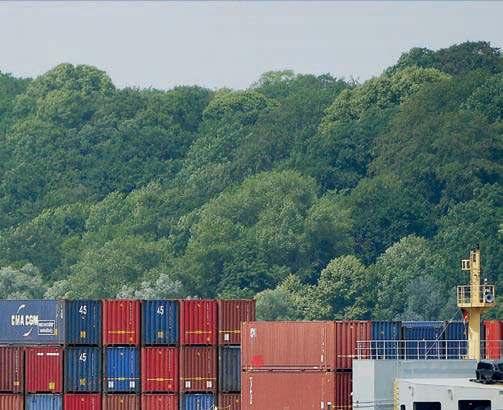
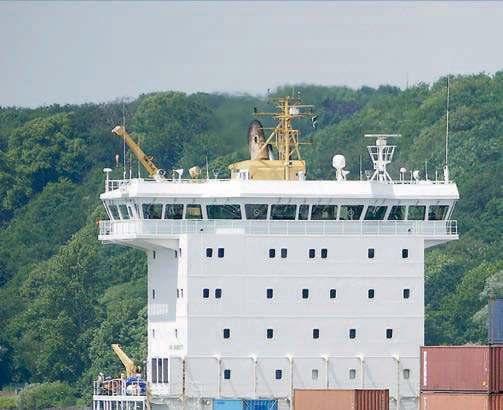
DAVID FRASER
PICTORIAL



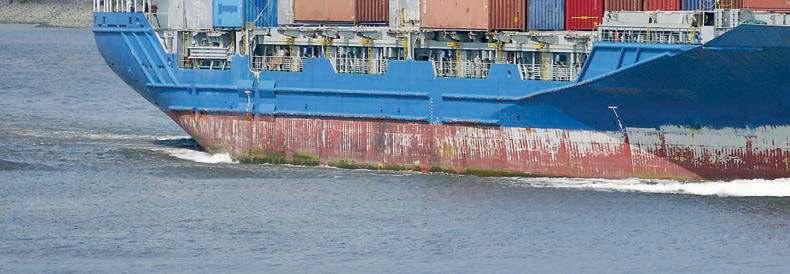

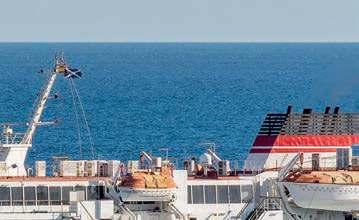

Have you an outstanding photo that would grace our gallery? Send your image to Ships Monthly for inclusion in these pages, which showcase the best in ship photography around the world.


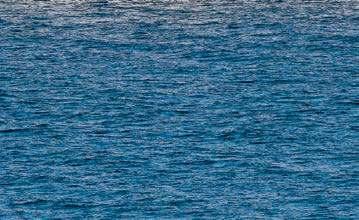
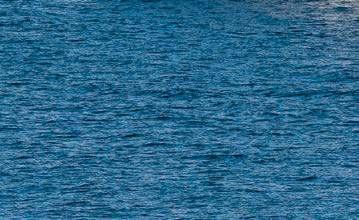
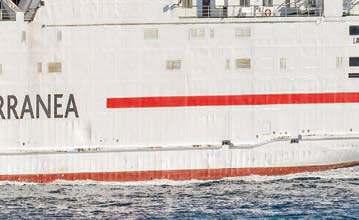

The offshore supply ship Ocean Duke
(3,315gt) arriving at Gibraltar from Brest
on 6 April 2019. She is owned by Island
Offshore of Ulsteinvik, Norway and was
built in 2013 as Island Duke. CHRIS BROOKS

The Chinese Navy training ship Qi Ji The CLdN/Cobelfret freight ferry
Guang (2017), with more than 500 cadets
embarked, visited Wellington, New
Zealand in October 2019 on a navigational
training exercise. VICTOR YOUNG
Laureline (50,443gt) heading up the
Thames, inbound from Rosenburg to
Purfleet, June 2019; she was built by
Hyundai, South Korea. ANDREW WOOD


Seabourn Cruise Line’s luxury cruise ship Seabourn Ovation (41,865gt) at anchor
off Oban, 26 September 2019. Completed in April 2018, the ship spent her
inaugural season in Europe; she has 300 suites, each with a balcony, and a
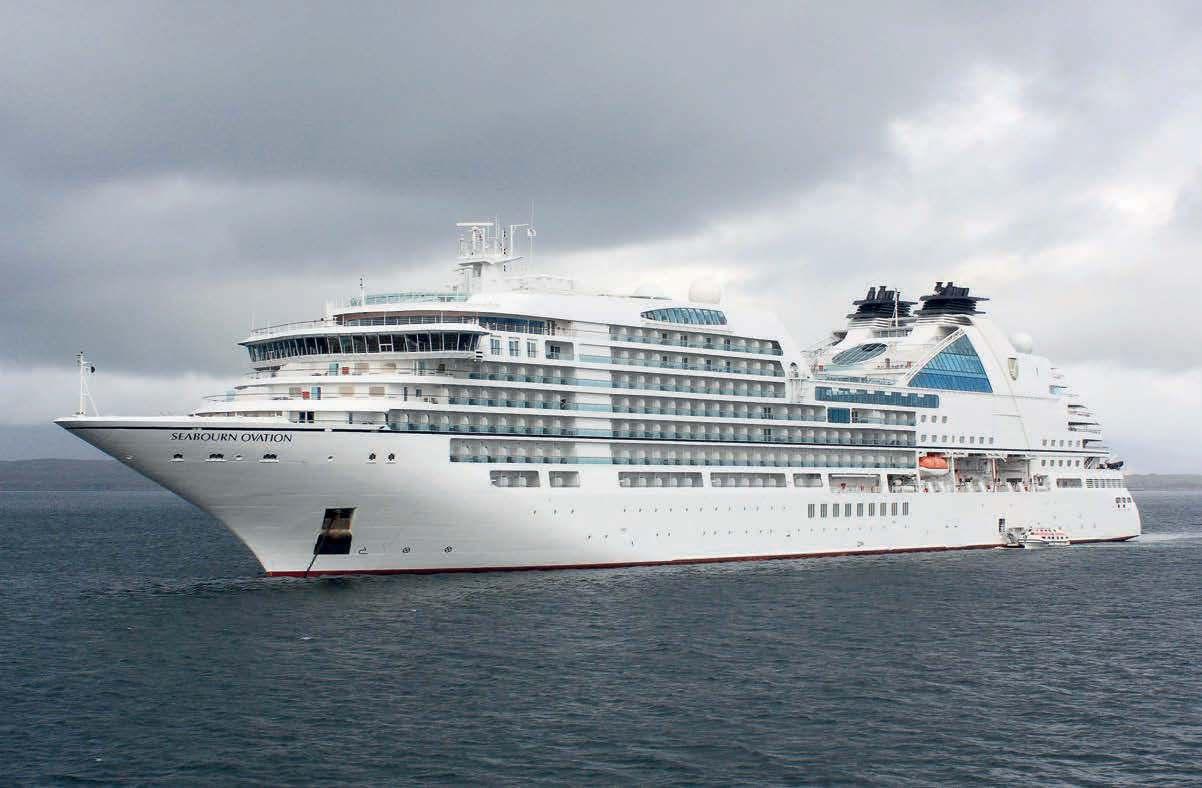
capacity of 604 passengers. BOB WRIGHT
NORWEGIAN E Last of the Breakaways

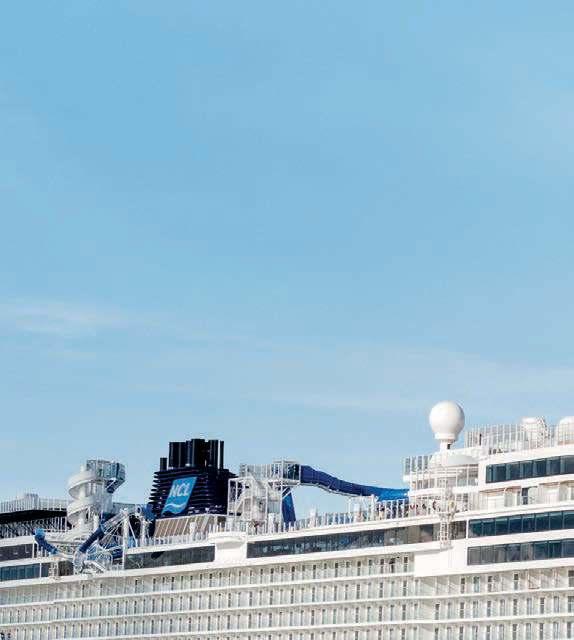
NORWEGIAN ENCORE
COMPANY Norwegian Cruise Line
BUILT Meyer Werft, Papenburg
TONNAGE 169,145
DIMENSIONS 333.5m x 41.45m x 9m
SPEED 22.5 knots
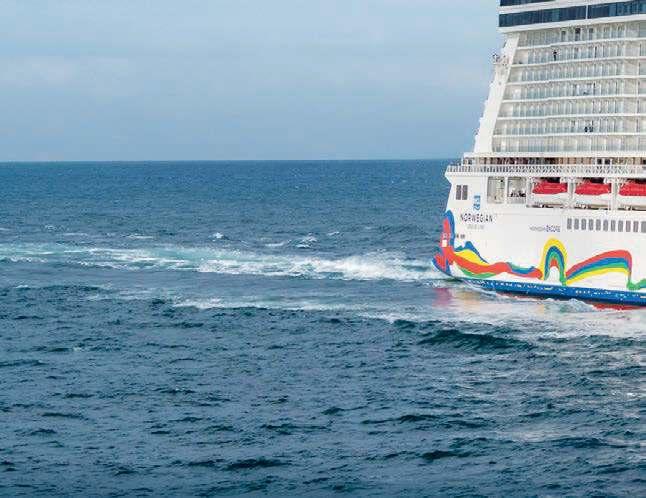
MACHINERY Five MAN diesel electric unit (3x12V48/60CR and 2 x 14V48/60CR)
BOW THRUSTERS Three tunnel thrusters of 3,500kW (4,759bhp)
DECKS 20
CAPACITY 4,903 (double occupancy)
CREW 1,731
REGISTRY Bahamas
Ordered in July 2014, Norwegian Encore was built by Meyer Werft in Papenburg and is now the largest ship in the 17-strong fl eet of Norwegian Cruise Line. The cruise line has a long history of ordering ships from the German shipyard, with 14 in its current fl eet having been built at the yard. Indeed, Encore’s sisterships, Norwegian Bliss, Norwegian Escape and Norwegian Joy, were all built at Papenburg, and the yard continues to turn out high quality innovative cruise ships. Norwegian Encore was constructed in Dockhalle 2, the larger of the two covered building halls, and the third largest in the world. She was built using what the yard likes to call the ‘Lego’ principle, which involves steel panels being turned into sections, and these sections then being joined to make larger blocks, which have a weight of up to a maximum of 800 tonnes.
These blocks are then joined together to build the ship. To reduce construction time, not all blocks are constructed in Papenburg, and a number were built at Neptun Werft in Rostock and then towed to Papenburg. One of the most complicated blocks is the
fl oating Engine Room Unit (FERU). Measuring 140m in length and up to 16m in height, the FERU houses all generators and machinery for both ship propulsion and electrical demand for the hotel areas, including the galleys, public areas, lighting and air-conditioning system. The FERU sections are built by Neptune Werft for both Meyer Werft and Meyer Turku shipyards. A total of 74 blocks were used in the construction of Norwegian Encore.
A CLASS OF THEIR OWN In 2013 Norwegian cruise line launched the fi rst Breakaway class ship and, as a result of

the success of the fi rst two ships in the class, a BreakawayPlus ship was designed, the fi rst of which was launched in 2015. These ships have become the most popular and successful in NCL’s fl eet. They all have the same basic design and layout, but have slight differences in passenger spaces and amenities.
The most notable change was introduced in 2017, when the second Plus class ship, Norwegian Joy, was delivered. The length was increased from 325m to 333m, a ducktail was added to the stern, and the overhanging lifeboats were moved inward to improve visibility, being located on
N ENCORE


On 31 October 2019, at a ceremony in Bremerhaven, Norwegian Cruise Line officially took delivery of Norwegian Encore, the fourth and final ship in its Breakaway-Plus class. Andrew McAlpine explains what the new ship has to offer.
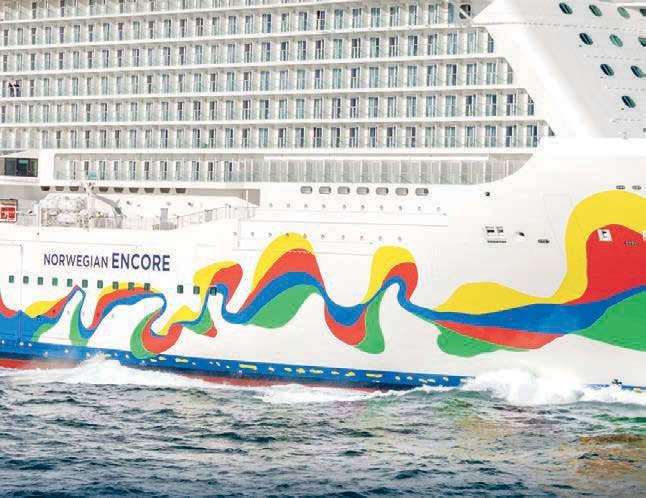
deck 7 under the wraparound waterfront promenade. The forward upper decks were also redesigned to incorporate a large observation lounge on deck 15, which meant the bridge was lowered by one deck and is now on deck 14. NCL are renowned for the art on their ships’ hulls, with that on both Breakaway classes coming from world-famous artists. For Norwegian Encore, the Spanish artist Eduardo Arranz-Bravo, renowned for his modern abstract style, was chosen. According to NCL, Encore’s artwork features a ‘labyrinth of colour inspired by Arranz-Bravo’s life, by the sea in Barcelona, and pays
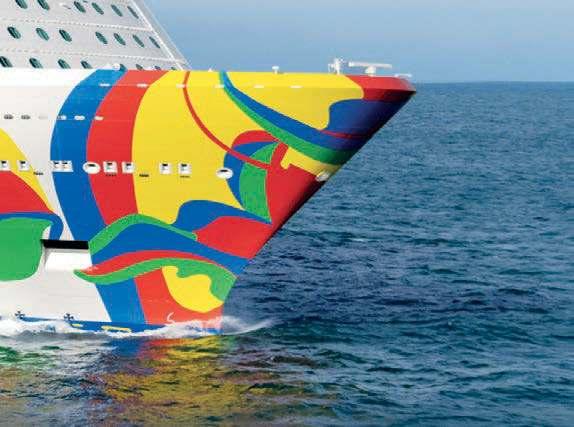
Norwegian Encore alongside the building hall at Meyer Werft,

Papenburg, as she nears completion. BUILDER’S PHOTO
The Aqua Racer tandem water slide snaking over the outside decks.

A range of activities for passengers of all ages can be found, as with all modern cruise ships, with NCL trying to offer something extra compared to its rivals. POOL The main pool deck, which seems quite small when compared to ships of a similar size, has two swimming pools, plenty of loungers and a large television screen; there is a kids splash zone with small water slide and tipping buckets. GALAXY PAVILION (Deck 16) An indoor virtual complex featuring multi-player gaming, an escape room, interactive video walls, space fl ight and race car simulators, bumper cars and Oculus, a virtual reality game. LASER TAG (Deck 18) Aft on deck 18, this open-air laser battle course uses augmented reality to take players to the lost city of Atlantis, with a giant serpent interwoven been ancient-looking pillars. AQUA PARK (Deck 18) Aqua Racer is a tandem waterslide featuring two separate water slides, allowing you to race other people; Ocean Loops has a double-loop slide which hangs over the side of the ship. ENCORE SPEEDWAY (Decks 18 and 19) The 1,100ft-long race track loops around over two storeys, with sections extending 13ft over both sides of the top deck; there are ten Ferrari-branded electric race cars,
Laser Tag.

The impressive Speedway course.
Ocean Loops water slide.

which reach speeds up to 40mph. KIDS CLUB (Deck 5) There are three separate venues on the same deck for children, organised around age groups, all of which are complimentary and supervised by certifi ed counsellors. They are: Guppies (ages six month to three years), Splash Academy (three to 12) and Entourage (ages 13 to 17).
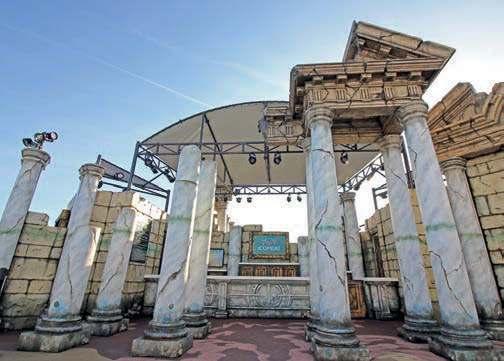


LATEST TECHNOLOGY Like most modern cruise ships, Norwegian Encore has been fi tted with the latest technology to comply with the latest environmental regulations. Priority was given to improving energy effi ciency, which included using optimised low-friction paint on the hull, giving improved hydrodynamics to reduce resistance and fuel consumption. The latest energyeffi cient electric motors were fi tted, together with a waste heat recovery system to recover heat from the ships engines, and reduce boiler fuel consumption by up to ten per cent. Energy-saving LED lighting is installed throughout the ship. Onboard electrical power is provided by fi ve MAN B&W units, comprising two 14V48/60CR units, each producing 22,520hp, and three 12V48/60CR units each producing 19,300hp. Two ABB Azipod XO units, with a total power output of 22MW each, provide main propulsion and steering. Each unit drives a 5.9m-diameter fi ve-blade fi xed-pitch pulling propeller, giving a cruising speed of 22.5 knots. Three

tunnel-type bow thrusters aid manoeuvring in port. water bottles from its fl eet. Norwegian Encore is the fi rst
Norwegian Encore is fi tted with an Exhaust Gas Cleaning System supplied by Norway’s Yara Marine Technologies AS. A mini-tower inline scrubber is installed for each engine, instead of a large multi-inlet scrubber serving several engines, with the system covering the whole propulsion system, replacing the silencer. The scrubbers are 20 per cent smaller than previous versions and occupy less cabin and service space. Collectively, they are capable of reducing the emission of sulphur oxide by up to 99 per cent and reduce particulate emissions by up to 85 per cent, resulting in a clean white plume of steam. As part of Norwegian Cruise Line’s ‘Sail & Sustain’ Environmental Program, aiming to reduce its carbon footprint and landfi ll waste, the line has partnered with JUST Goods, Inc, a sustainable packaging company founded by American recording artist and environmental activist Jaden Smith, to remove

ship in the company’s history to be introduced as a ‘plastic bottle-free’ ship, a sustainable practice that Norwegian Cruise Line is planning to roll out to the entire fl eet in 2020.
STATEROOMS
There are 2,040 staterooms divided into 42 separate
categories. These start with 99ft 2 single inside studio
staterooms, of which there are 82 on decks 10, 11 and
12; they have been designed specifi cally for solo travellers,
and feature virtual views, with some interconnecting cabins.
The majority of staterooms are 175ft 2 balcony rooms

on decks 8 through to 15, of which there are 1,112. Within this category are various balcony sizes, together with interconnecting family staterooms and spa suites. For passengers with disabilities, Norwegian Encore’s gangways are wide enough for wheelchairs and disability scooters, and there are 47 accessible staterooms, all of which feature wider in shower, raised toilets and captioned TVs. All Norwegian Encore cabins feature a sleeping area, with standard twin/single beds convertible to queen size, leather headboards and lighted recesses above the bed. All feature en-suite bathrooms with bath products and hair dryers. The lounge/ sitting area has a full-size wardrobe, vanity area with ample storage space, fl at screen TV, a safe, mini-bar, direct-dial phone and airconditioning.
HAVEN LUXURY At the forward end on decks 17 and 18 is the Haven, an area NCL describe as being a ‘ship within a ship’. This exclusive part of the ship offers guests a personal
Norwegian Encore on sea trials. Her float-out was on 17 August 2019 and she was towed from the building dock to receive her funnel cladding and further outfitting. She set off along the Ems towards Eemshaven for sea trials on 30 September 2019. COMPANY PHOTO
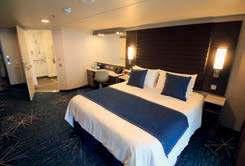


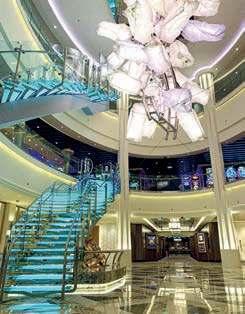
On board Norwegian Encore, from top to bottom: aft-facing accessible cabin; Delux Owners cabin; Studio Cabin solo occupancy; and 678 Ocean Place.
ANDREW MCALPINE
TIMELINE
2014 Jul 14: ordered
2018 Jan 31: fi rst steel cut
2018 Nov 27: keel laid

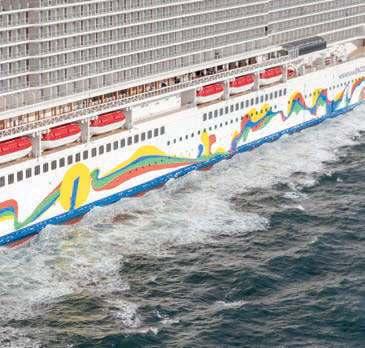
2019 Aug 17: fl oat-out
2019 Sep 30- Oct 1: River Ems conveyance to Eemshaven
2019 Oct 31: Handed over at Bremerhaven
2019 Nov 2-11: maiden transatlantic voyage from Southampton to New York
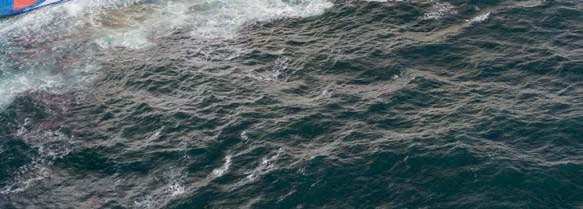
The Haven Lounge.

concierge and 24-hour butler service. It includes its own bar, restaurant, observation lounge and courtyard, complete with pool and exclusive sundeck. The highest-grade staterooms are found within the Haven area. Encore has 80 all-suite Haven staterooms in eight different categories, with 50 located forward in the Haven complex, and 30 outside. Those outside have full use of all Haven amenities. Haven staterooms range from two-person suites up to the top grade 1,458ft 2 Haven
Deluxe Owner’s suites, which sleep up to six. There are two owners’ suites, both situated forward on deck 18, which feature a separate living room, dining area, a large dressing area, and bathroom with separate shower, bathtub, two sinks, vanity area, floor-toceiling windows and a large wraparound balcony.
ENTRY INTO SERVICE For her inaugural season, Norwegian Encore held various
BARS • LOUNGES • DINING
There are 15 bars and lounges on board, with something for everyone, starting with the A-List bar, named after Andy Stuart, outgoing President and CEO of Norwegian Cruise Line, and offering handcrafted cocktails. Meanwhile, District Brewhouse offers 50 different bottled and 22 draught beers, as well as speciality cocktails.
The replica Cavern club and the adults-only Vibe beach club and Social comedy club provide different entertainment options. A number of the bars, including the Brewhouse and the Mojito bar Sugarcane, are situated on deck 8 along the
waterfront promenade deck and have outside seating areas giving
good ocean views.
Of all the public areas, the most
notable has to be the observation
lounge. The 2,723ft 2 space is located
forward above the bridge, spanning the forward part of decks 15 and 16. It features floor-to-ceiling windows offering 180-degee panoramic views, with a full service bar. Norwegian Encore has an extensive range of complimentary and speciality restaurants, which offer everything from bar snacks to luxurious fine dining. Unlike many older ships, where restaurants are in the bowels of the ship, with limited views, a number of restaurants on Norwegian Encore are located along the waterfront on deck 8 and offer al fresco dining.
There are six complimentary dining options, offering a wide choice of cuisine. These are the Manhattan Room, Savor Restaurant, Taste Restaurant, The Local Bar & Grill , Garden Café, Haven restaurant (Haven guests only) and Room Service. Speciality dining includes American Diner, Cagney’s Steakhouse, Coco’s, Dolce Gelato, Food Republic, La Bistro French Restaurant and Los Lobos.
The JMSDF destroyer Murasame on exercises with the Royal Navy frigate Montrose off the coast of Japan in 2019. Coco’s Gelato.


Manhattan Room Restaurant The Observation Lounge.
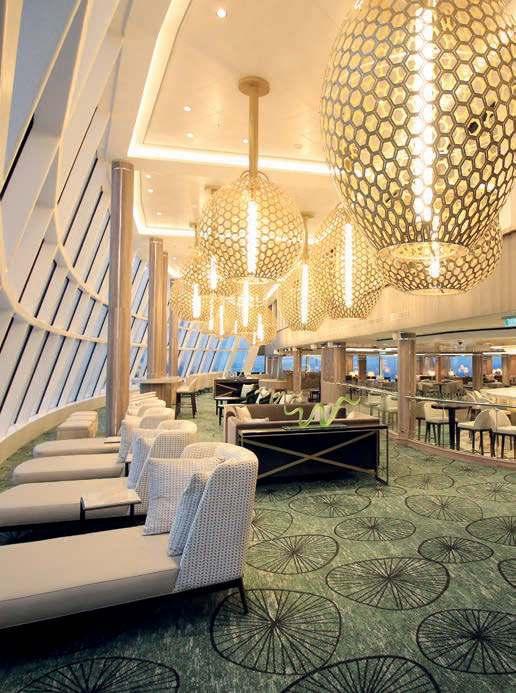
preview events in Europe, with a preview cruise from Bremerhaven to Southampton, before her official inaugural voyage, an eight-day transatlantic sailing from Southampton to New York. Further preview events were organised upon her arrival in North America, while she was in New York and Miami, and prior to her official christening and subsequent debut to the public.
Following her debut in Miami, her deployment will cover the Eastern Caribbean for her inaugural season, offering seven-day eastern Caribbean cruises calling at San Juan, St Thomas and Tortola. She will then reposition to New York to sail to Bermuda and the Canadian Maritimes and New England in summer 2020, before moving back to homeport in Miami in winter 2020 to cruise the Western Caribbean. In spring 2021 she will make her first Panama Canal transit to be deployed to Seattle for her first Alaska season.



Supporting seafarers in need and their families since 1917




